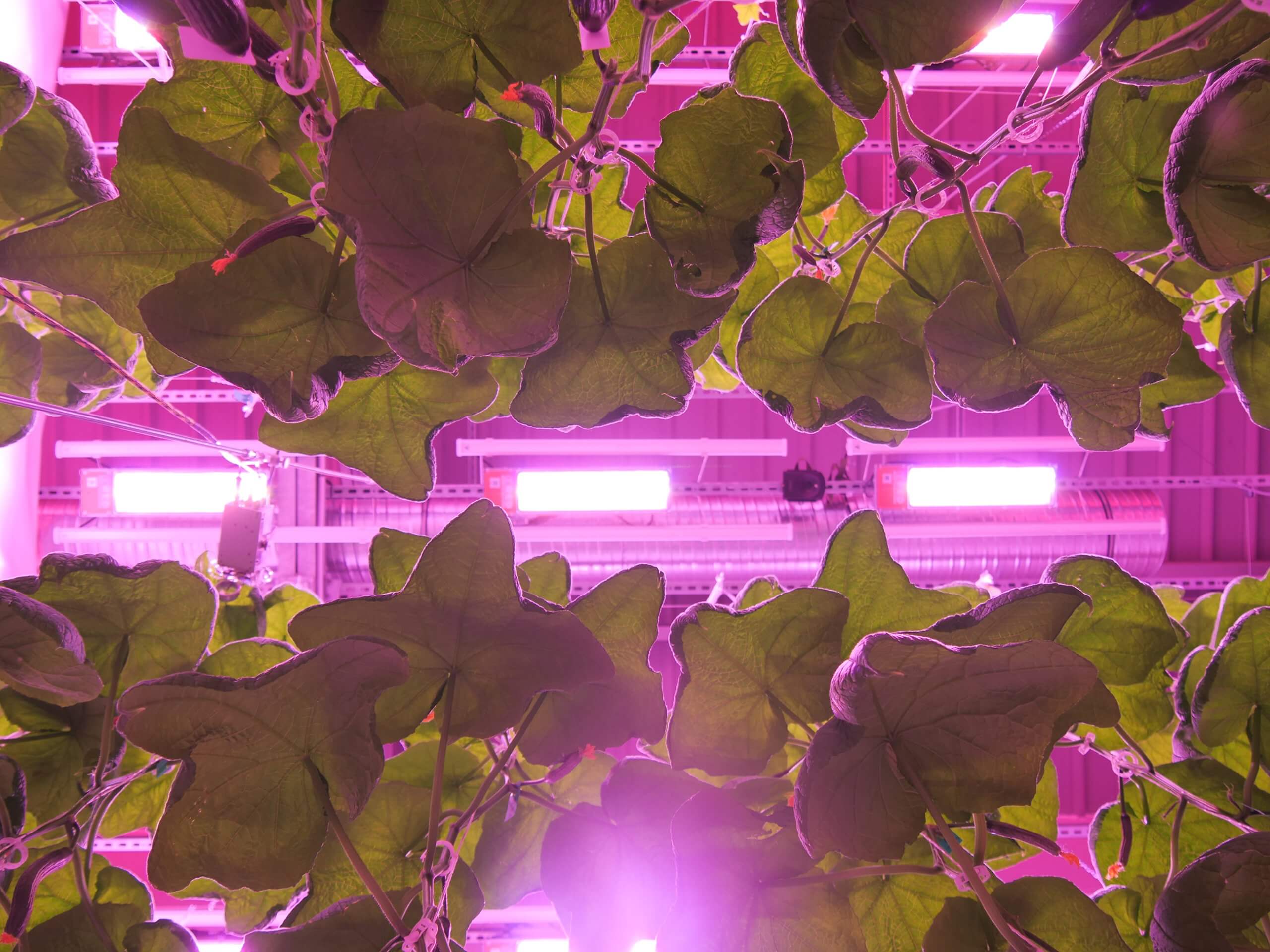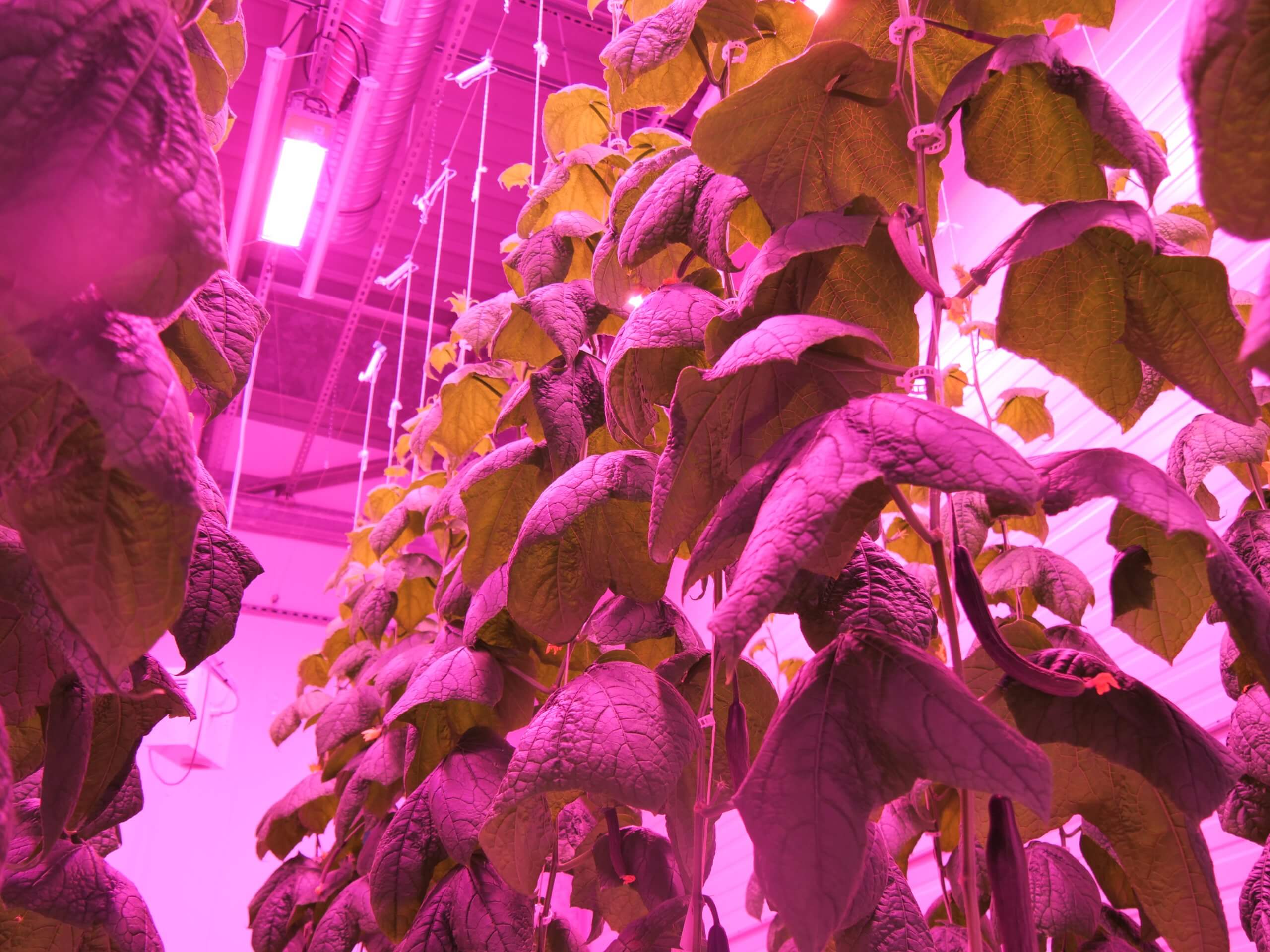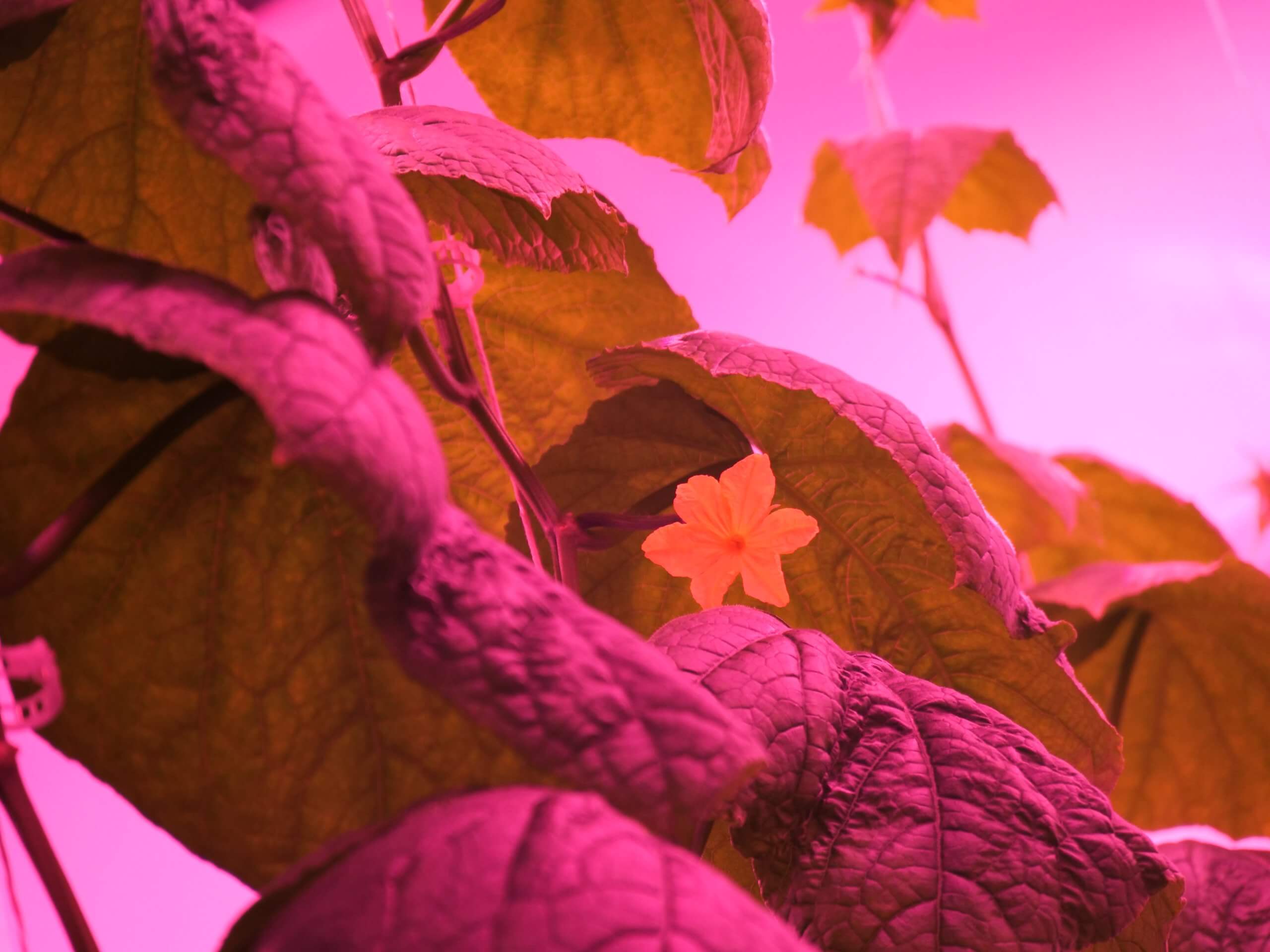
Insights from three years of LED Lighting Research in high-wire Cucumber Cultivation
24 June 2025INTRODUCTION
After three years of dedicated research and development at RED Horticulture’s PARC facility in Nantes, the agronomic team is enthusiastic to share its findings on high-wire cucumber cultivation under LED lighting. Directed by former cucumber grower Paul Vailhen, now Customer Success Manager at RED, the research is focused on supporting growers with actionable insights and contribute to the advancement of next-generation LED luminaires.
RESEARCH FACILITY AND METHODOLOGY
The trials were conducted at PARC: RED’s Center for Research in Photobiology and Agronomy, a one-of-a-kind global laboratory focused solely on plant photobiology. PARC integrates IIVO’s HLP climate control system from Hoogendoorn and RED’s dynamic lighting software. Over the course of three years, three separate trial series were completed, consistently testing at least two cucumber varieties, sourced from the leading breeders Enza Zaden, Nunhems, and Rijk Zwaan.
BACKGROUND: CHALLENGES WITH LED TRANSITION IN CUCUMBER CULTIVATION
Initial observations showed challenges transitioning cucumbers from HPS to LED lighting. Paul Vailhen’s response to that was: “Initially, the transition for cucumbers, unlike tomatoes, didn’t go well. Lighting suppliers applied a standard 5/5/90 toplight + interlight spectrum without conducting sufficient trials or having specific knowledge about cucumbers.”
As an early adopter of full-LED systems in Nantes, Paul notes that profitability was too low under LED lighting during the november-to-march production window. “After two years, we had to stop growing cucumbers in that greenhouse due to suboptimal yields and plant stress, including curling, yellowing and poor growth.”

RESEARCH PHASES AND KEY FINDINGS
PHASE 1: UNDERSTANDING THE ROLE OF FAR-RED LIGHT
The first series of trials focused on the impact of far-red light. Results showed a clear yield improvement of 5 – 7% compared to the traditional 5/5/90 spectrum, but only if far-red levels were carefully managed according to natural light availability.
- In the absence of natural light, far-red was essential for healthy development, promoting growth and mitigating the negative effects of overly red-heavy spectra.
- Responses varied by variety; some needed less far-red, others more, indicating the importance of adaptive application.
- Excessive far-red during the entire crop cycle (fixed at 10%) led to over-elongation (30%+ increase), requiring more crop management and increasing energy use by 13%.
- During deep winter, higher far-red (≥ 6%) was beneficial, but not so beneficial during brighter periods.
Phase 2: Balancing Blue Light to Optimize Plant Architecture
Building on the far-red insights, the second phase examined blue light’s role to counterbalance excessive vegetative growth and maintain yield benefits.
- RED used its unique four-channel lighting system to deliver high blue light levels while reducing white light, which is less energy efficient.
- Trials showed up to a 24% yield increase compared to the market-standard spectrum over a 13-week cycle.
- Compact plant structure correlated strongly with higher yields, as blue-enriched spectra encouraged:
- Easier trellising due to smaller plants
- Better light penetration through smaller leaves
- Higher flower positioning, indicating enhanced generative development and faster fruit formation.
- Despite these benefits, enriched blue spectra increased energy consumption, which needed more research before there was ultimate optimization.

DYNAMIC LIGHTING
In this third phase, the team leveraged all accumulated knowledge to develop more energy-efficient lighting strategies. The challenge extended beyond plant physiology, they had to take economics into consideration: lowering lighting costs while maintaining or improving yield. The solution to this dilemmas was “dynamic lighting”: adaptive spectra that adjusts accordingly to the growth stage, the plant vigor and the fruit load.
- Dynamic lighting spectra adjusted in real-time based on plant growth stage, vigor and fruit load.
- Performance was measured using Light Use Efficiency (LUE) and Energy Use Efficiency (EUE).
- Results showed impressive gains:
- 19% increase in total yield
- 20% improvement in energy use efficiency
- 28% boost in light use efficiency (varied by variety).
The team was excited with these results, as Paul states “these results could never have been achieved without separating the delivery of blue and white light in our solution.”
CONCLUSION
After three years of intensive trials, Paul Vailhen summarizes: “The best spectrum for cucumbers is one that adapts dynamically to the plant’s needs, the season and of course to the grower’s resources. Especially during deep winter, when natural light is limited, a fixture that can adjust between 7 – 20% blue , without increasing white light in the meantime, ánd adjust between 4 – 10% far-red ensures optimal year-round performance.”
This research highlights the importance of flexible, spectrum-tailored LED solutions to maximize cucumber yield and energy efficiency under varying environmental conditions.

